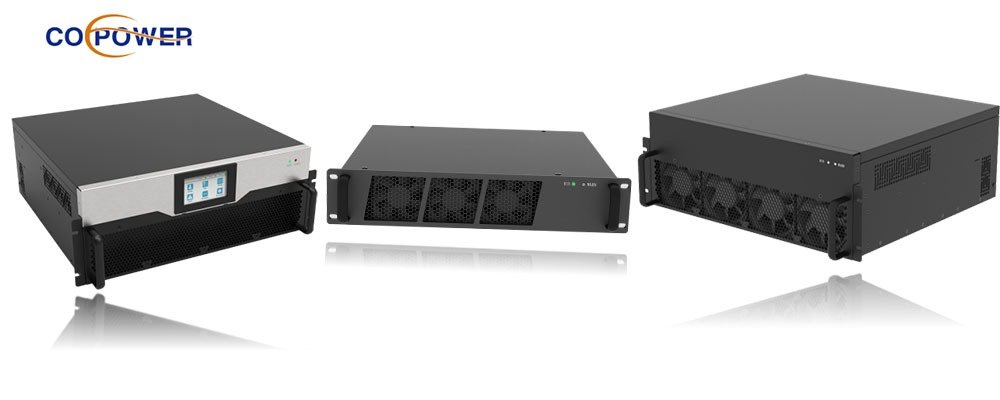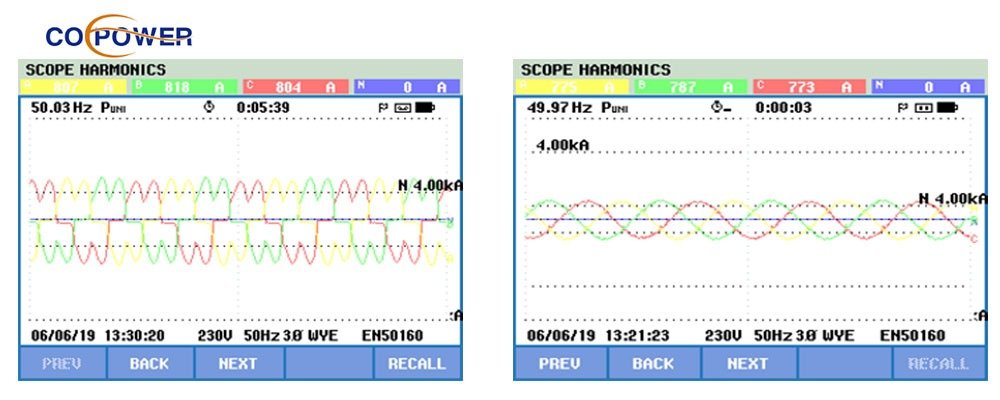مقدمه
در سیستم های برق مدرن, استفاده فزاینده از بارهای غیرخطی-مانند درایوهای فرکانس متغیر (VFDS), منبع تغذیه سوئیچینگ, و اینورترهای انرژی تجدید پذیر - منجر به گسترش تحریفات هارمونیک شد. این هارمونیک ها می توانند کیفیت قدرت را کاهش دهند, باعث نقص تجهیزات می شود, و تلفات انرژی را افزایش دهید. فیلترهای هارمونیک مؤلفه های اساسی هستند که برای کاهش این تحریفات طراحی شده اند, اطمینان از عملکرد سیستم قدرت کارآمد و قابل اعتماد.

- درک هارمونیک در سیستم های برقی
1.1 تعریف هارمونیک
هارمونیک ها ولتاژ یا شکل موج فعلی با فرکانس هایی هستند که چند برابر از فرکانس سیستم قدرت اساسی هستند (به طور معمول 50 هرتز یا 60 هرتز). آنها توسط بارهای غیرخطی تولید می شوند که جریان را در پالس های ناگهانی به جای امواج سینوسی صاف می کنند.
1.2 منابع هارمونیک
منابع متداول هارمونیک ها شامل می شوند:
دستگاه های الکترونیکی قدرت (به عنوان مثال, اصلاح کننده, اینورتر, VFDS)
منبع تغذیه بدون وقفه (غوغا)
سیستم های روشنایی LED و فلورسنت
کوره های قوس و دستگاه های جوشکاری
سیستم های انرژی تجدید پذیر (اینورترهای خورشیدی/باد)

دستور اصلی اعوجاج هارمونیک است 5/7 اعوجاج جریان هارمونیک, و شکل موج فعلی یک شکل موج موج دو سر معمولی را ارائه می دهد. قبل از درمان تجهیزات, نرخ تحریف هارمونیک کل سیستم به دست آمد 35.8%. بعد از درمان تجهیزات, نرخ تحریف هارمونیک کل سیستم تقریباً کاهش یافته است 5%, شکل موج به حالت عادی بازگشت, و در همان زمان, هر هارمونیک به طور قابل توجهی کاهش یافته است.
اعوجاج هارمونیک می تواند منجر شود:
گرمای بیش از حد ترانسفورماتورها و موتورها, کاهش طول عمر آنها
خرابی بانک خازن به دلیل شرایط رزونانس
افزایش تلفات برق در سیستم های توزیع
تداخل در سیستم های ارتباطی
نقص تجهیزات الکترونیکی حساس
برای کاهش این مسائل, از فیلترهای هارمونیک استفاده می شود.
2. هدف فیلترهای هارمونیک
The primary purpose of harmonic filters is to reduce harmonic distortion in electrical networks by either blocking or absorbing harmonic currents. Key objectives include:
Improving power quality by maintaining voltage and current waveforms close to sinusoidal.
Preventing equipment damage caused by excessive harmonic heating.
Enhancing system efficiency by reducing losses.
Complying with power quality standards (به عنوان مثال, IEEE 519, IEC 61000-3-6).
3.2 فیلترهای هارمونیک فعال (قوای)
Active filters use power electronics (igbts, DSP controllers) to inject counter-harmonic currents that cancel out distortions. They dynamically adapt to varying harmonic loads.

Advantages:
Highly effective for a wide range of harmonics.
Real-time adaptive compensation.
No resonance issues.
Disadvantages:
Higher initial cost.
Requires a power supply and complex control circuitry.
4. Working Principle of Harmonic Filters
4.1 Passive Filter Operation
A passive filter is designed to provide a low-impedance path for specific harmonics. For example, a 5th harmonic filter uses an LC circuit tuned to 250 هرتز (برای 50 Hz systems). Harmonics at this frequency are shunted, preventing them from entering the grid.
4.2 Active Filter Operation
An active harmonic filter continuously monitors the load current using sensors. A digital signal processor (DSP) analyzes harmonics and generates inverse currents, which are injected back into the system to cancel distortions.

The harmonic source equipment generates harmonic currents of various orders. After the APF measures the harmonic current, it controls the IGBT switch output to be opposite to its direction, and the harmonic current of equal magnitude is offset. After the current passes through the APF access point, it can be restored to pure
5. Applications of Harmonic Filters
Harmonic filters are widely used in industries with high harmonic pollution, از جمله:
گیاهان صنعتی (with VFDs and large motor drives)
مراکز داده (sensitive IT equipment)
سیستم های انرژی تجدید پذیر (solar/wind farms)
Hospitals and laboratories (critical power quality requirements)
ساختمانهای تجاری (LED lighting and HVAC systems)

Zhenjiang Shipyard Renovation Project

Shanghai Pudong People’s Hospital

Xi’an Thermal Power Company

Jinan Airport

Chery (Ordos) New Energy Intelligent Connected Vehicle Industrial Park

Southern Sichuan Public Health Training and Research Base

Korla parking lot charging pile project


